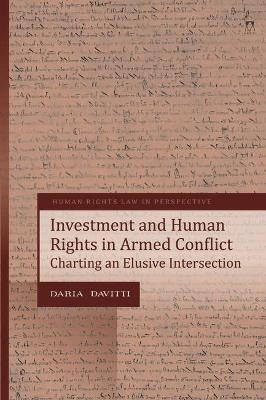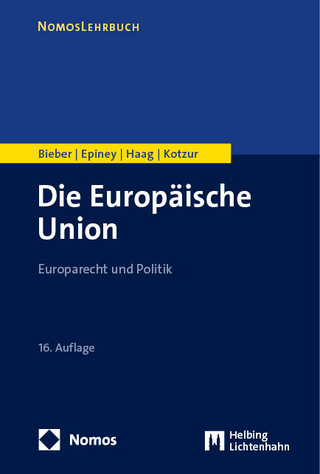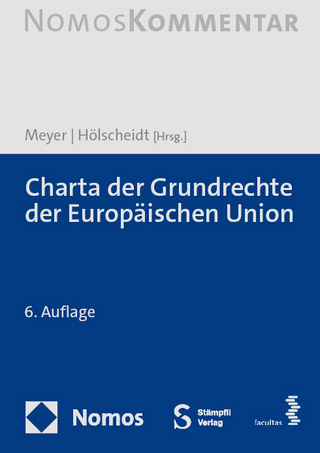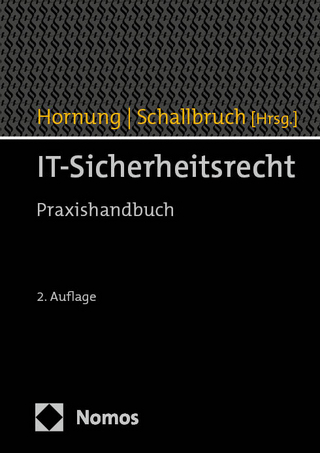
Investment and Human Rights in Armed Conflict
Hart Publishing (Verlag)
978-1-5099-1166-0 (ISBN)
Daria Davitti is a Research Fellow at Lund University in Sweden and an Assistant Professor at the University of Nottingham, UK.
Introduction
I. Focus of the Book
II. Structure of the Book
1. Extractive Sector Investment in Conflict Countries: The Situation in Afghanistan
I. Extractive Companies in Conflict Countries: An Issue of Human Rights Protection?
A. The Human Rights Impact of Extractive Companies in Conflict Countries
B. Conceptualising the Term ‘Protection’
II. Practical Challenges in Operationalising Human Rights Protection When Extractive Companies Invest in Conflict Countries: The Situation in Afghanistan
A. Corporate Abuse and ‘Soft-law’ Mechanisms
B. Prioritising the Rights to be Protected
C. A Complex Political Context
III. Preliminary Conclusions
2. The Relevant Legal Framework: Investment Protection in Conflict Settings
I. Foreign Investment and the Need for Protection: International Investment Law and Armed Conflict
A. The Notion of Investment
II. Relevant Standards of Investment Protection
A. The Evolution of FET through the Doctrine of Legitimate Expectations
B. Full Protection and Security
C. War Clauses
D. Protections Against Expropriation
E. Most-favoured Nation Treatment
III. Preliminary Conclusions
3. The Relevant Legal Framework of Human Rights Protection: ESC Rights and the Right to Water
I. Reasons for a Focus on the Right to Water
II. Legal Foundations of the Right to Water
III. States’ Obligations to Respect, Protect and Fulfil
IV. Article 2(1) ICESCR: Progressive Realisation and Obligations of Immediate Effect
A. Elimination of Discrimination
B. Obligation to Take Steps
C. Prohibition of Retrogressive Measures
D. Minimum Core Obligations
V. Availability, Accessibility, Acceptability and Quality
VI. Maximum Available Resources
VII. International Assistance and Cooperation as a Basis for Extraterritorial Obligations
VIII. On Limitations to ESC Rights
IX. Preliminary Conclusions
4. Human Rights and Investment: Analysing the Relationship
I. The Contours of a Troubled Relationship
A. Of Conflicting Laws: How States’ Obligations in International Investment Agreements Affect States’
Human Rights Obligations
B. Of the Inherent Limitations of International Investment Law
II. Is a Balance Between ‘Investors’ Rights’ and Human Rights Possible?
III. Preliminary Conclusions
5. Business and Human Rights: A Tool for Investment and Human Rights Protection in Armed Conflict?
I. A Critical Appraisal of the Business and Human Rights Framework
A. Third Pillar: Effective Remedial Action
B. Second Pillar: The Corporate Responsibility to Respect Human Rights
C. First Pillar: The State’s Duty to Protect Human Rights
II. The Framework at the Intersection of International Human Rights Law and Investment Law in Armed Conflict
III. Preliminary Conclusions
Conclusion: Implications for Afghanistan
| Erscheinungsdatum | 07.06.2019 |
|---|---|
| Reihe/Serie | Human Rights Law in Perspective |
| Verlagsort | Oxford |
| Sprache | englisch |
| Maße | 156 x 234 mm |
| Gewicht | 594 g |
| Themenwelt | Recht / Steuern ► EU / Internationales Recht |
| Recht / Steuern ► Öffentliches Recht ► Völkerrecht | |
| ISBN-10 | 1-5099-1166-9 / 1509911669 |
| ISBN-13 | 978-1-5099-1166-0 / 9781509911660 |
| Zustand | Neuware |
| Haben Sie eine Frage zum Produkt? |
aus dem Bereich


